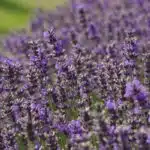The Mona Lavender plant is often referred to as the ‘Gift of Nature’, since its beauty and fragrance bring peace and joy to all who behold it. It is a symbol of serenity, hope, and compassion that can be used to bring people together in times of distress. Its soft purple blooms evoke a feeling of tranquility, making it an ideal addition to your garden or home.
Growing and caring for Mona Lavender plants requires patience, dedication, and knowledge. To ensure that the plant thrives and produces vibrant blooms year after year, it’s important to understand the needs of these special plants. Knowing how much light they need, when they should be watered, and what type of soil they prefer are all key elements in creating a healthy environment for them.
As an experienced botanist and gardener, I have learned that Mona Lavender plants require special care but can reward you with years of beautiful flowers and fragrant aromas if properly maintained. In this article I will cover the basics on how to grow and care for Mona Lavender plants so you can enjoy their beauty in your own space.
What Is ‘Mona Lavender’ Plectranthus?
The mysterious, fragrant ‘Mona Lavender’ Plectranthus is something of an enigma. It’s a hybrid between a unique African species and a Plectranthus native to South Africa. The result? A gorgeous flowering plant with strong, sweet-smelling foliage that can be found in many gardens around the world.
But while it may be popular, its exact origins remain something of a secret. It remains unclear exactly which two species were crossed to produce it – adding to the plant’s allure for those with a penchant for botany and gardening.
The good news is that this exotic beauty does not require too much effort to care for. All you need to do is make sure it receives plenty of sunlight and water, as well as regular pruning when necessary, and your Mona Lavender will thrive – giving you years of pleasure from its beautiful blooms.
Where Does ‘Mona Lavender’ Plectranthus Grow Best?
Mona Lavender Plectranthus is a plant of rare beauty and extraordinary grace. It has the potential to transform any garden into a thing of wonder, one that will be admired for generations. Growing Mona Lavender is truly an incredible and rewarding experience, but before you dive in here’s what you need to know:
Firstly, it is important to understand where Mona Lavender Plectranthus grows best. For optimal results, this plant requires well-draining soil with a slightly acidic pH balance. It prefers full sun or partial shade and grows best in temperatures between 65°F and 70°F (18°C – 21°C). To ensure proper growth, it needs regular waterings but should not be allowed to sit in standing water as this can cause root rot. Additionally, some gardeners report success by planting the Mona Lavender Plectranthus directly into the ground rather than in pots or containers. Here are four key points for getting your Mona Lavender off to a great start:
- Choose an area with well-draining soil and plenty of sunlight;
- Make sure the pH balance of the soil isn’t too high or low;
- Provide regular waterings;
- Plant directly into the ground if possible.
By following these steps, you’ll be giving your Mona Lavender everything it needs to flourish and grow for many years to come! With proper care and attention, this magnificent plant is sure to bring beauty and joy to your garden.
How To Plant ‘Mona Lavender’ Plectranthus
Planting ‘Mona Lavender’ Plectranthus is a rewarding experience. On average, 1-2 plants are enough to fill in a single flower bed. With its beautiful purple flowers, this plant will add color to any garden space. To get you started, here are some steps on how to plant and care for your own Mona Lavender Plectranthus.
First, choose an area that receives partial sunlight and has good drainage. Select an area with well-draining soil for optimum growth and health of the plant. Dig a hole that is twice as wide as the pot the plant arrived in and the same depth. Place the roots gently into the hole and backfill with soil mix or compost until it is even with the ground level. Make sure to water thoroughly after planting and mulch heavily around the base of the plant to help retain moisture in hotter climates.
When it comes to fertilizing ‘Mona Lavender’ Plectranthus, only do so if you have poor soil or if your plants don’t seem to be growing well. If needed, use a balanced fertilizer such as 10-10-10 but avoid overfertilizing as too much nitrogen can cause leggy growth instead of bushy foliage. During warmer months also remember to water regularly but make sure not to overwater or let them sit in wet soil as they can easily succumb to root rot.
These simple steps will help ensure that your ‘Mona Lavender’ Plectranthus will thrive in its new home! Next up, we’ll discuss how much sun these plants need for optimal growth and flowering potential.
Sun Requirements For ‘Mona Lavender’ Plectranthus
Sunlight is an important factor for the growth and development of Mona Lavender Plectranthus. It should be planted in a spot that receives plenty of sunlight, as it needs at least six hours of direct sunlight each day to thrive. Here are four key points to consider when selecting the perfect location for your lavender:
- Pick a sunny spot with no shade for optimal results.
- Avoid placing plants near walls or buildings, as this can cause them to overheat in summer months.
- If planting indoors, place in an area near a window where it will get some natural light during the day.
- Be sure to rotate potted plants regularly to ensure even sunlight exposure on all sides of the plant. When selecting an outdoor spot, keep in mind that Mona Lavender Plectranthus do not tolerate extreme temperatures; they should be kept away from hot spots or areas prone to frost damage. Too much sun can also result in wilting and discoloration of foliage, so make sure you find a balance between too little and too much sun exposure for your lavender plants! With adequate sun and proper care, you’re sure to enjoy beautiful blooms from your Mona Lavender Plectranthus for many years to come! Now that we’ve discussed sun requirements for Mona Lavender Plectranthus, let’s look at what it takes to keep these plants properly watered and hydrated.
Watering Requirements For ‘Mona Lavender’ Plectranthus
Some gardeners have found success in growing ‘Mona Lavender’ Plectranthus, a hardy and fast-growing species. For instance, Mrs. Smith of New York City planted some of these plants in her backyard, and in no time she had a beautiful array of lavender blooms that lasted all summer. In order for this type of plant to thrive, it’s important to consider the watering and sun requirements.
When it comes to watering ‘Mona Lavender’ Plectranthus, it is best to keep the soil evenly moist but not soggy. When temperatures rise, it’s essential to water deeply and regularly; however, when temperatures drop during winter months, you can reduce watering frequency. To determine if your plants need water, simply check the top few inches of soil for moisture. If the top layer feels dry or if the leaves are beginning to wilt, then it’s likely time to give them a drink!
In addition to proper watering habits, ‘Mona Lavender’ Plectranthus also needs plenty of sunlight in order to bloom. These plants should be placed in an area that gets at least six hours of direct sunlight per day. If your climate is especially hot or humid during the summer months, you may want to provide some afternoon shade for your plants as well. By providing ample sunlight and consistent moisture levels throughout their growing season, you can expect a generous display of fragrant blooms from your ‘Mona Lavender’ Plectranthus!
Now that we know about the sun and watering requirements for ‘Mona Lavender’ Plectranthus, let’s move on to exploring our next step: soil requirements for this beautiful species!
Soil Requirements For ‘Mona Lavender’ Plectranthus
So, you’ve finally made it to the sixth step in growing and caring for ‘Mona Lavender’ Plectranthus. Congratulations! Even though this journey has been long, it’s been worth it. As a reward for making it this far, here are four fun facts about soil requirements for ‘Mona Lavender’ Plectranthus:
- This plant likes soil that is slightly acidic (between pH 6.0 and 7.0).
- It prefers loamy or sandy soils with good drainage as well as some organic matter added in.
- It can handle some shade but prefers full sun exposure.
- When planting, make sure to dig a hole twice the size of the container the plant came in and fill with soil that meets your plants needs.
Now that you know what kind of soil your ‘Mona Lavender’ Plectranthus needs, it’s time to ensure they receive proper nutrition from fertilizers. Fertilizing can be tricky so make sure to read up on the topic before getting started!
Fertilizer Requirements For ‘Mona Lavender’ Plectranthus
Glorious ‘Mona Lavender’ Plectranthus, with its beautiful foliage and breathtaking blooms, is an absolute delight to behold! This unique plant requires special care in order to bring out its full potential. Fertilizing is an essential part of the process. Let’s explore the fertilizer requirements for ‘Mona Lavender’ Plectranthus.
First off, it’s important to understand that this species of plectranthus likes a well-drained soil rich in organic matter. To ensure this, you can mix in some peat moss or compost into the soil prior to planting. Once planted, you can use a slow-release granular fertilizer for your ‘Mona Lavender’ Plectranthus. It should contain phosphorus as well as other micronutrients such as magnesium and potassium. Another option is liquid fertilizer which should be applied every three weeks during the growing season.
It’s also important to note that too much fertilizer can lead to weakened plants with yellow leaves and stunted growth. So make sure you follow the directions on the label carefully when applying any type of fertilizer. Additionally, these plants don’t need much fertilization in winter so it’s best to stop feeding them after early fall when they enter dormancy. With the right amount of nutrients and attention, your ‘Mona Lavender’ Plectranthus will surely thrive in no time!
By providing your ‘Mona Lavender’ Plectranthus with adequate nutrition through fertilizers, you can reap the rewards of a healthy and vibrant plant – one that will bring joy for years to come! Now let us move onto another critical step: pruning these precious plectranthus plants for optimum health and bloom production.
Pruning ‘Mona Lavender’ Plectranthus
The vibrant, fragrant blooms of the Mona Lavender Plectranthus are a sight to behold, and their beauty is only enhanced by careful pruning. Pruning is an important part of maintaining this lovely plant; it helps promote healthy growth and encourage robust flowering. With the right pruning techniques, you can ensure your Mona Lavender Plectranthus remains in its best condition.
It’s essential that you prune in the late winter or early spring months before new growth begins. Start by removing any dead or damaged stems, and then use sharp shears to trim back any shoots that are growing too long or straggly. Aim to keep the overall shape of the plant compact and full. Additionally, don’t forget to take away any spent blooms as they appear – this will help promote further flowering throughout the season.
When it comes to keeping your Mona Lavender Plectranthus looking its best, regular pruning is key. By taking care with your pruning techniques and following these simple steps, you can ensure your plant stays healthy and continues to bloom year after year. Now that we’ve discussed how to properly prune your Mona Lavender Plectranthus, let’s move on to propagation…
Propagating ‘Mona Lavender’ Plectranthus
Propagating plants is like raising children – it takes time, patience and a lot of love. While there are many methods of propagating ‘Mona Lavender’ Plectranthus (MLP), the most successful and reliable is cuttings. Cuttings can be taken all year round, but for best results, it’s best to take them in summer or early autumn when the plant is actively producing new growth. Here’s how to propagate ‘Mona Lavender’ Plectranthus from cuttings:
First, prepare a pot filled with a well-draining soil mix. You can also use pots lined with sphagnum moss or perlite, both of which help retain moisture while allowing air to circulate around the roots. Next, select healthy stems that have at least two sets of leaves and remove any flowers or buds. Cut off the bottom of each stem just below a node – this will be where the new roots will form. Dip the cut end into some hormone rooting powder to encourage root growth and then place the cutting into the soil mix. Water lightly and keep out of direct sunlight until root formation begins – usually within three weeks.
Once you’ve planted your cuttings, continue to water regularly and ensure even moisture in the soil mix. If you find any sections drying out quicker than others, mist them with water to help keep everything evenly moist until the new roots have developed sufficiently for normal watering practices to take over. With patience and proper care, your propagated ‘Mona Lavender’ Plectranthus should be ready for transplanting within three months or so!
Controlling Pests And Disease On ‘Mona Lavender’ Plectranthus
It is important to consider the potential for pests and disease when growing ‘Mona Lavender’ plectranthus. These plants are fairly resistant to many common pests, but can be prone to root rot and other fungal diseases if overwatered. To keep your ‘Mona Lavender’ healthy, it is essential to provide them with proper care and monitor them regularly for signs of pests or diseases.
The best way to prevent pest infestations on ‘Mona Lavender’ plectranthus is by providing the plant with an environment that meets its needs. Ensure that you are planting in well-draining soil, with plenty of space between plants, and that there is adequate air circulation around it. Additionally, removing any wilted or dead foliage will help discourage pests from taking up residence in the plants.
Finally, when dealing with existing pest problems, it is important to use organic methods whenever possible. Insecticidal soaps or horticultural oils are both effective ways to manage insect infestations without harming beneficial insects or your ‘Mona Lavender.’ For fungal diseases like root rot, make sure you’re not overwatering and improve drainage if needed. With a few simple steps, you can maintain the health of your ‘Mona Lavender’ plectranthus for years to come.
Proper drainage and water management are key for avoiding overwatering which can cause serious damage to your ‘Mona Lavender.’ By keeping an eye out for signs of overwatering such as yellowing leaves or wilting stems, you’ll be able to take action before it’s too late.
Dealing With Overwatering Of ‘Mona Lavender’ Plectranthus
As with most plants, too much of a good thing can be detrimental to Mona Lavender Plectranthus. Overwatering this particular species can cause root rot, and even death in extreme cases. To avoid such an unfortunate outcome, it is essential to take the necessary steps to prevent overwatering.
The idiom “A stitch in time saves nine” is apt in this context; taking proactive measures now will save future headaches. One way to ensure you don’t overwater your Mona Lavender Plectranthus is to water them only when the soil becomes dry. This could require testing the soil about one or two inches down with your finger for moisture. Depending on the climate and other conditions of your garden, you may need to water more often than once per week.
Another helpful tip is to use a container that has good drainage holes at the bottom so excess water can get out quickly. Additionally, try using a potting mix made for plants requiring well-draining soil rather than regular garden soil which tends to retain moisture for longer periods of time. With these simple steps in mind, you should be able to successfully avoid overwatering while providing ample hydration for your Mona Lavender Plectranthus. Now that we have taken care of watering concerns, it’s time to turn our attention towards creating an attractive display with these beautiful blooms.
Creating An Attractive Display With ‘Mona Lavender’ Plectranthus
Creating an attractive display with ‘Mona Lavender’ Plectranthus is a great way to highlight this stunning plant. It’s easy to create a visually pleasing display if you follow these steps. First, select the right container for your Mona Lavender. Choose one that has good drainage, as this species does not tolerate overly wet conditions. A terracotta pot is ideal for its porous nature, allowing the soil to dry out quickly between waterings. Additionally, placing several plants in a single container can make a more striking effect than one solitary specimen. Here are some tips for creating an eye-catching display:
- Place taller varieties in the back of the container and shorter ones in front.
- Use contrasting foliage textures to add interest.
- Combine different flower colors for a multicolored look.
- Include other plants such as trailing vines or ground covers to add depth and texture to your design.
When planting your Mona Lavender into its new home, use well-draining soil and water thoroughly until excess moisture begins running from the drainage holes at the bottom of the pot. Once established, water only when the top inch or two of soil feels dry to the touch; then give enough water so that it drains out through those holes. Fertilizing regularly will help keep your plants healthy and looking their best; use a balanced liquid fertilizer diluted at half strength every couple of weeks during active growth periods (spring through summer). With proper care, you can enjoy this beautiful plant indoors or out for many years to come!
Best Companion Plants For ‘Mona Lavender’ Plectranthus
When it comes to creating an attractive display, companion planting is a great way to add color and texture to the garden. Mona Lavender Plectranthus is a particularly versatile plant that can be paired with many other plants in order to create a stunning visual impact. In this section, we will discuss the best companion plants for Mona Lavender Plectranthus, so that you can enjoy the most beautiful garden possible.
First of all, there are several varieties of Mona Lavender Plectranthus that do well as companions to each other. They offer lush foliage and deep purples and blues, which makes them ideal partners when it comes to creating an interesting and vibrant landscape. Additionally, other plants such as azaleas or hydrangeas make excellent companions for Mona Lavender Plectranthus due to their own colorful blooms and foliage.
Finally, certain herbs such as oregano or rosemary also pair well with Mona Lavender Plectranthus. Herbs are low-maintenance and easy-to-care-for plants that bring a pop of green into any garden bed. Furthermore, they have attractive flowers that bloom in late spring and summertime months – adding even more color! As you can see, there are many different types of companion plants that look great alongside Mona Lavender Plectranthus; the options are truly endless!
With these tips in mind, you’ll be able to choose the perfect combination of companion plants for your garden bed featuring Mona Lavender Plectranthus. Next up: harvesting and storing this beautiful plant!
Harvesting And Storing ‘Mona Lavender’ Plectranthus
Harvesting and storing ‘Mona Lavender’ plectranthus is a straightforward process. To harvest the plant’s flowers, simply snip them off with scissors at the base of the stem. Take care not to damage the foliage as you do so. Flowers should be harvested in the morning when their aroma and potency are at their highest. It is recommended that you use the harvested flowers in floral arrangements or dried herbs for culinary purposes right away.
If you wish to store your Mona Lavender plants for later use, it can be done easily. Cut stems four to eight inches long, then hang them upside down in a cool, dry place until they are completely dry – this may take up to two weeks depending on humidity levels. Once dry, strip the leaves from the stems and store in an airtight container away from direct sunlight. The resulting product can be used to make herbal teas or infused oils for topical applications.
Storing Mona Lavender flowers also makes it possible to enjoy this beautiful plant all year round. From displaying its vibrant blooms as part of a fresh flower arrangement to using its aromatic oils and dried herb for countless culinary uses, this wonderful plant has many practical applications. With proper care and harvesting techniques, you’ll be able to enjoy Mona Lavender’s beauty and bounty for years to come!
15.
Finally, it’s time to harvest and store your Mona Lavender Plectranthus. But don’t worry, we’ve got you covered! This guide will teach you how to do it right and keep your plant looking fresh and healthy.
First, start off by cutting the stems at the base of the plant. You’ll want to use a sharp pair of scissors as this will make harvesting easier and less stressful for your Mona Lavender Plectranthus. Make sure that you leave a few inches of stem so that you can easily replant them if needed.
Next, prepare a space for storing your harvested Mona Lavender Plectranthus. Here are four tips for successful storage: 1) Place the harvested stems in a cool and dry place; 2) Use airtight containers or jars to stop moisture from entering; 3) Seal the containers or jars with paper or plastic bags; 4) Label each container clearly so that you can easily identify which one is Mona Lavender Plectranthus when you’re ready to use them again.
Now that you know how to harvest and store your Mona Lavender Plectranthus, it’s time to start enjoying its beauty! With proper care and attention, this stunning flowering plant will bring joy into any home or garden for many years to come.
Frequently Asked Questions
How Can I Tell When ‘Mona Lavender’ Plectranthus Needs To Be Watered?
Watering your Mona Lavender Plectranthus is like nurturing a baby. It needs the right amount of moisture to stay healthy and happy – not too little and not too much. The key is to be observant and attentive to its needs, just like you would with a baby. Here’s how you can tell when it’s time to water:
- Check the soil every few days. If it feels dry, then it’s time to add some water.
- Monitor the leaves for signs of wilting or discoloration. This can indicate a lack of sufficient hydration.
- Take note of any changes in foliage growth rate. Slow growth could mean that the plant isn’t getting enough water.
- Feel around the root ball for soft spots or discoloration which could be a sign of over-watering or root rot caused by too much moisture in the soil.
As an experienced botanist and gardener, I know that properly caring for Mona Lavender Plectranthus will result in beautiful blooms that will last for months on end, so it’s important to get into the habit of regularly checking your plants for signs of dehydration or overwatering. Look out for changes in foliage color, leaf droopiness and size, as well as any changes in soil texture – all of these can provide clues about whether your plant needs more or less water! With regular monitoring and attention, you’ll be sure to have a thriving garden full of lush greenery in no time!
How Often Should I Prune ‘Mona Lavender’ Plectranthus?
Pruning ‘Mona Lavender’ Plectranthus is an important part of caring for the plant, as it encourages more vigorous growth and blooming. Pruning can also be used to control size and shape in order to maintain a desirable appearance. For best results, prune ‘Mona Lavender’ Plectranthus regularly according to the following guidelines:
- Prune lightly throughout the growing season. This will encourage new growth, promote bushier plants, and help keep them from becoming leggy. It’s best to prune just after blooming has finished for the season.
- If you want to shape or control size, wait until late winter or early spring, when plants are dormant. When pruning at this time of year, it’s okay to cut back stems by up to one-third of their length.
- Remove any dead, diseased, or damaged flowers and stems immediately throughout the growing season as needed.
When pruning ‘Mona Lavender’ Plectranthus, use sharp garden scissors or shears and make sure all your cuts are clean and even. Make sure not to remove too much at once; regular light pruning is more effective than aggressive pruning done on rare occasions. To ensure healthy plants that look their best year-round, aim to prune ‘Mona Lavender’ Plectranthus on a regular basis throughout the growing season and late winter/early spring as needed for shaping and size control.
Is ‘Mona Lavender’ Plectranthus Suitable For Container Gardening?
Are you looking for a perfect plant that can be grown in containers? If so, look no further than ‘Mona Lavender’ Plectranthus! This stunning and fragrant beauty is the ideal choice for container gardening. Its vibrant purple blooms and its unique aroma will fill your home with natural splendor!
This particular species of Plectranthus is quite easy to care for. All it needs is moist, well-drained soil and some sunshine to thrive. Watering it regularly will help keep the soil from drying out, but make sure not to overwater as this can cause root rot. Pruning should also be done on a regular basis to ensure it remains healthy and lush.
Furthermore, ‘Mona Lavender’ Plectranthus does best with moderate temperatures — neither too hot nor too cold — making it perfectly suited for container gardening in most climates. Plus, since it’s an evergreen species, you won’t have to worry about replacing your plants each year as they will remain vibrant throughout all seasons!
TIP: To ensure your plants stay healthy and happy, give them some extra TLC by adding a mulch layer around the base of their containers. This will help keep moisture in and weeds out while providing added nutrients in the form of organic matter. With minimal effort and care, ‘Mona Lavender’ Plectranthus can be a vibrant addition to any container garden for years to come!
Are There Any Diseases I Need To Be Aware Of When Growing ‘Mona Lavender’ Plectranthus?
Growing ‘Mona Lavender’ Plectranthus can be a rewarding experience, but it’s important to know what diseases you need to be aware of. As a specialist in botany and gardening, I want to share with you the information you need to make sure your Mona Lavender plants thrive!
Diseases that commonly affect Mona Lavender are root rot, powdery mildew and leaf spot. Root rot is caused by too much water which leads to rotting of the roots and can eventually kill the plant if not addressed. Powdery mildew is caused by poor air circulation and humid conditions, leading to white spots on leaves. Finally, leaf spot is caused by fungal infections resulting in brown or yellow spots appearing on leaves.
These are all serious diseases, so it’s essential to take steps such as providing adequate drainage for your plants and making sure they get enough sunlight and air circulation if you want them to grow healthy. Also make sure not to overwater them – sticking your finger an inch into the soil should tell you when it needs watering – if it feels dry then give it a drink! Taking these preventative measures can help ensure that your Mona Lavender plants stay healthy and flourish for many years.
What Is The Best Way To Propagate ‘Mona Lavender’ Plectranthus?
Propagating ‘Mona Lavender’ Plectranthus is an easy, yet rewarding process. It’s a great way to increase the number of plants you have or to share some with friends and family. With a little patience, time and effort, you can create a beautiful garden full of these fragrant and vibrant blooms!
To propagate this plant, you will need to take stem cuttings from healthy sections of stem. Make sure the cutting has at least two sets of leaves so it can photosynthesize properly. Trim away any excess leaves and then place the cutting in a container filled with water. Change the water every few days to keep it fresh. Once roots begin to form, transfer the cutting into its own pot filled with well-draining soil.
Caring for your new ‘Mona Lavender’ Plectranthus is relatively straightforward; make sure it receives plenty of sunlight but not too much direct heat as this can damage the plant. Provide adequate moisture without overwatering, as this could lead to root rot or fungal diseases. Feed your plants regularly with fertilizer in order to maintain strong growth and beautiful blooms throughout the season. With proper care, your new plant should be flourishing in no time at all!
Conclusion
In conclusion, ‘Mona Lavender’ Plectranthus is an easy to care for and beautiful flowering plant. It’s bright blooms will bring a splash of colour to any garden. With regular watering and pruning, you can enjoy this plant for many years to come.
When it comes to propagation, ‘Mona Lavender’ Plectranthus can be grown from cuttings or seeds with equal success. Interestingly, the cuttings can root in as little as 2 weeks when planted in moist soil with temperatures between 70-80 degrees Fahrenheit.
Finally, it’s important to watch out for common pest infestations such as aphids and mealybugs that may attack the soft stems and foliage of this plant. If detected early, these issues can be treated quickly with insecticidal soap or neem oil.
All in all, ‘Mona Lavender’ Plectranthus is a wonderful addition to any garden and requires minimal care and maintenance to keep it looking its best.





























